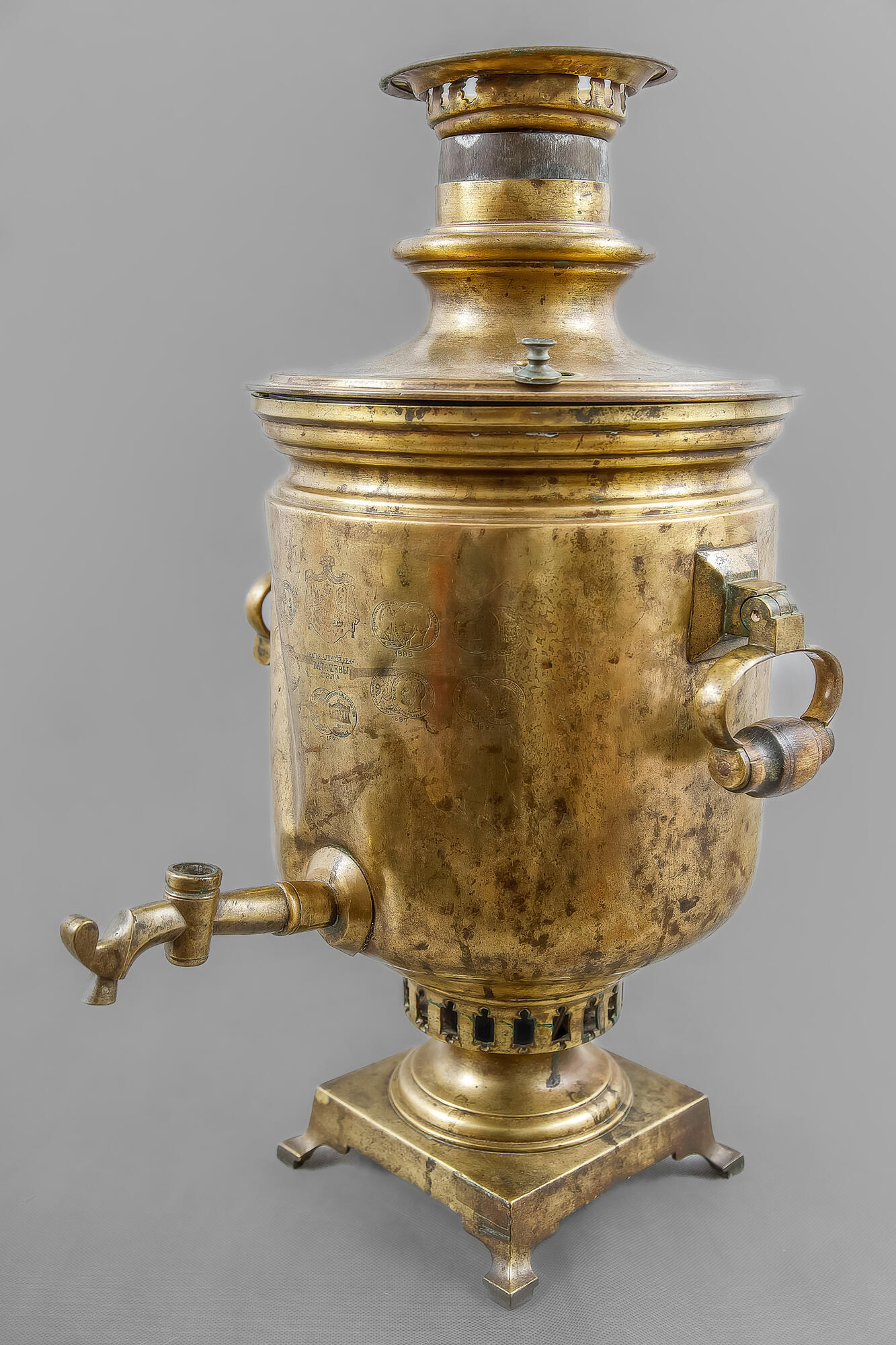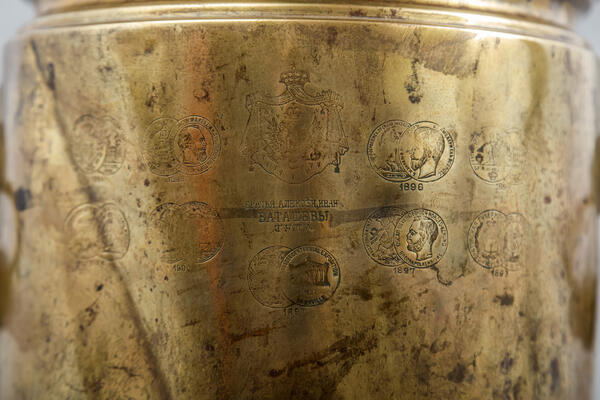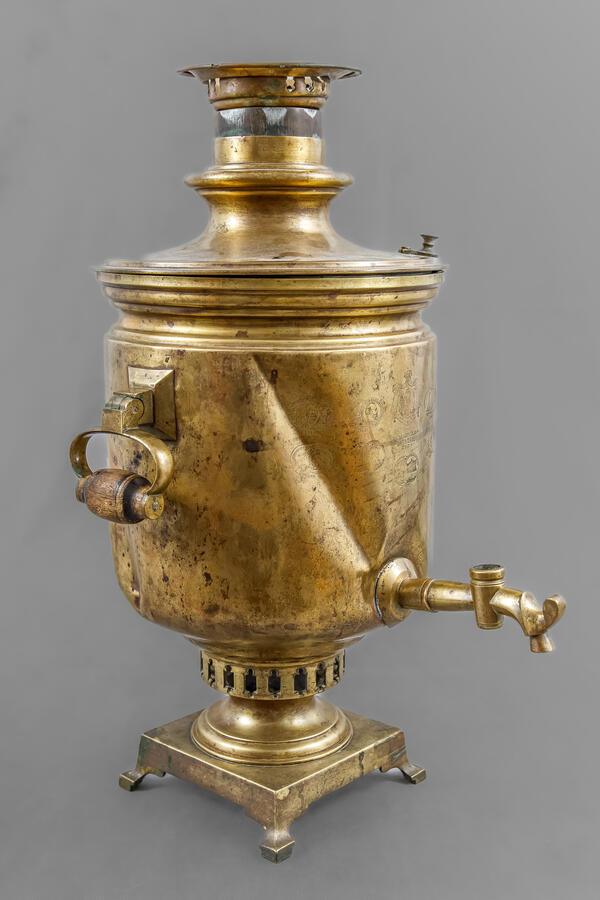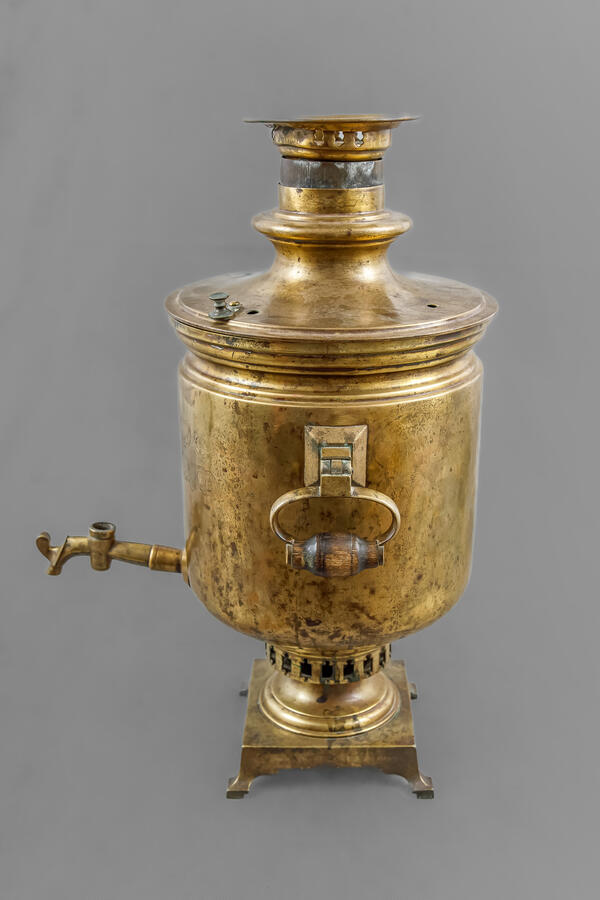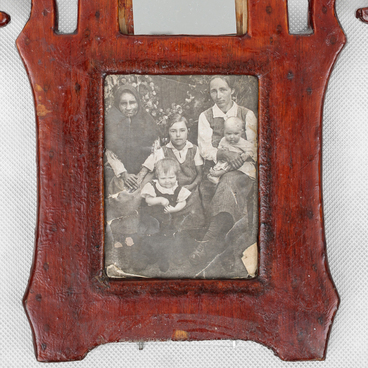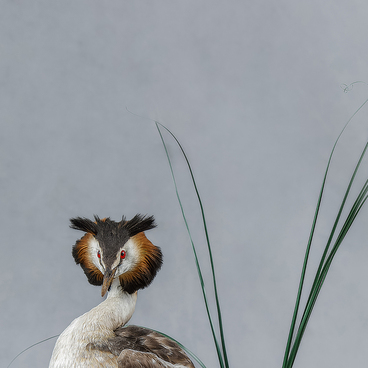A copper samovar from the collection of the Uray City Historical was made at the Tula factory of Strelnikov. It is dated to 1841. The factory was founded a year earlier by Filat Strelnikov, and after his death, in 1869, it was called the factory of the Strelnikov brothers and existed until the 1890s.
The factory produced samovars of various shapes. The museum exhibit has hallmarks, one of which is a portrait of Alexander I, who occupied the throne until 1825, the other features Nicholas I, who succeeded Alexander I and ruled until 1855. In addition, the surface of the samovar features engraved inscriptions “Alexander I Emperor of All Russia” and a similar one for Nicholas I.
On the sides of the samovar, the artisan made two handles with wooden holders, which he decorated with relief transverse lines. In front of the device is a traditional spout. The exhibit does not have a tap.
The most important part of the samovar is the body. Artisans often tried to give it an exquisite shape for rich buyers, but in this case a rather simple shape was chosen. Water was poured into the body and boiled there.
A special cavity for fuel, which was located in the center of the samovar body, was considered an equally important detail. It was called a jug or a brazier pipe. The Tula craftsman placed this samovar on four legs. In addition, he provided a special lid, which closed a cylindrical container for pouring water.
The first mention of the samovar in historical documents dates back to 1746, but it is impossible to name the exact date and place of its appearance. There is a legend according to which it had been brought by Peter I from Holland as an outlandish and innovative device.
There is another version, according to which the birthplace of the samovar was not even Tula, but the Urals, and its creator was the Tula blacksmith Demidov. Historians also disagree on the name. In different regions of Russia, the device was called differently: in Yaroslavl — “samogar”, in Kursk — “samokipets”, and in Vyatka — “samogrey”.
The factory produced samovars of various shapes. The museum exhibit has hallmarks, one of which is a portrait of Alexander I, who occupied the throne until 1825, the other features Nicholas I, who succeeded Alexander I and ruled until 1855. In addition, the surface of the samovar features engraved inscriptions “Alexander I Emperor of All Russia” and a similar one for Nicholas I.
On the sides of the samovar, the artisan made two handles with wooden holders, which he decorated with relief transverse lines. In front of the device is a traditional spout. The exhibit does not have a tap.
The most important part of the samovar is the body. Artisans often tried to give it an exquisite shape for rich buyers, but in this case a rather simple shape was chosen. Water was poured into the body and boiled there.
A special cavity for fuel, which was located in the center of the samovar body, was considered an equally important detail. It was called a jug or a brazier pipe. The Tula craftsman placed this samovar on four legs. In addition, he provided a special lid, which closed a cylindrical container for pouring water.
The first mention of the samovar in historical documents dates back to 1746, but it is impossible to name the exact date and place of its appearance. There is a legend according to which it had been brought by Peter I from Holland as an outlandish and innovative device.
There is another version, according to which the birthplace of the samovar was not even Tula, but the Urals, and its creator was the Tula blacksmith Demidov. Historians also disagree on the name. In different regions of Russia, the device was called differently: in Yaroslavl — “samogar”, in Kursk — “samokipets”, and in Vyatka — “samogrey”.
